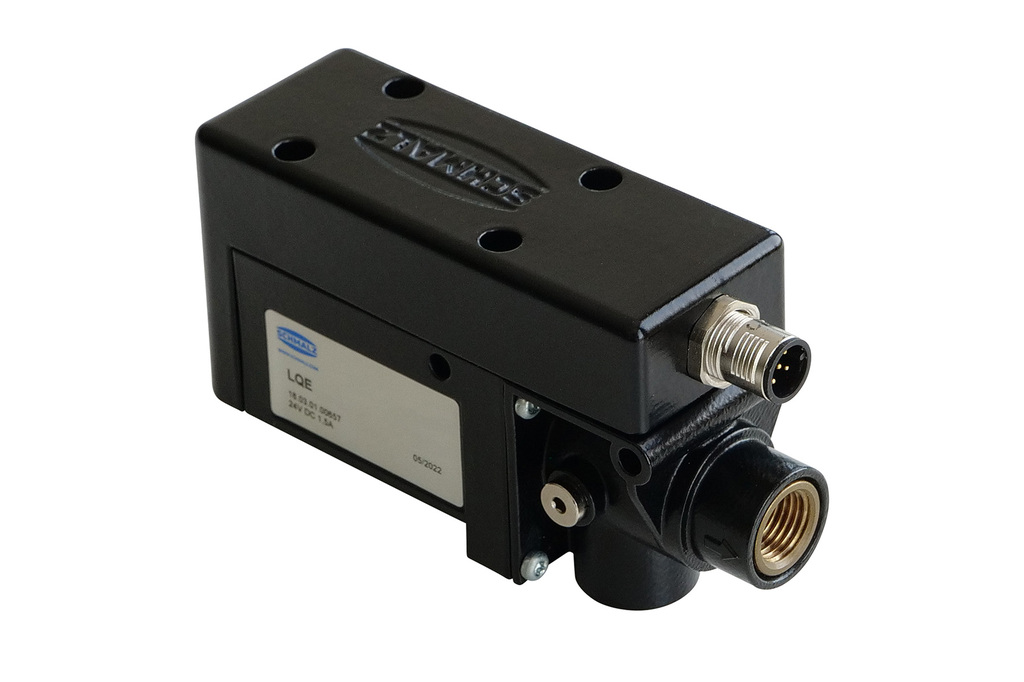Energieeinsparung in der Vakuumautomatisierung: Pumpe statt Ejektor
Schmalz ist Marktführer in der Automatisierung mit Vakuum sowie für ergonomische Handhabungssysteme. Nun wird Energiesparen immer wichtiger und zugleich nimmt die Bedeutung der mobilen Roboter zu. Diese können keinen Druckluftkompressor transportieren. Daher hat Schmalz eine elektrische Lösung entwickelt. Nachfolgend wird die Pressemitteilung für diese wiedergegeben.
Besuchen Sie den Deutschen Robotikverband für mehr Informationen.
Bislang war Druckluft die Basis für eine erfolgreiche Automation
Druckluft lässt sich vielseitig anwenden und verbindet Geschwindigkeit, Kraft sowie geringes Gewicht. Allerdings sind die Kosten, um sie zu erzeugen, relativ hoch, da hierzu elektrische Energie über mehrere Wirkungsgradverluste umgewandelt werden muss. Auch wenn die druckluftlose Fabrik lediglich als Schlagwort für einen Trend genannt wird, braucht es jetzt schon technologische Alternativen, die die Vakuum-Automation vom Druckluftschlauch unabhängig macht.
„Es geht nicht darum, druckluft-basierte Ejektor-Systeme zur Vakuumerzeugung zu ersetzen. Wir wollen Alternativen schaffen, die den Energieverbrauch reduzieren und auch dann noch funktionieren, wenn keine oder zu wenig Druckluft zur Verfügung steht“, erklärt Dr. Kurt Schmalz, Geschäftsführender Gesellschafter der J. Schmalz GmbH. Mögliche Szenarien sind mobile Roboter oder Roboterzellen, die in einem Bereich arbeiten, der nicht an das Druckluftsystem angeschlossen ist. Die Vakuum-Erzeuger verbrauchen im Vergleich zur gesamten Anlage prozentual gesehen sehr wenig Energie.

Vakuum-Erzeuger klein gemacht
Die Lösung sind rein elektrische Vakuum-Erzeuger, die so kompakt sind, dass sie auch direkt am Roboterarm montiert werden können. Elektrische Vakuumerzeuger an sich sind nichts Neues: „Wir haben schon lange elektrische Pumpen und Gebläse im Angebot, die Betreiber in der automatisierten und manuellen Handhabung einsetzen, wenn hohe Saugvolumenströme erforderlich sind. Für eine Anwendung am Roboterarm sind diese jedoch zu groß und zu schwer“, erklärt Dr. Kurt Schmalz. Schmalz hat daher das Portfolio elektrischer Vakuumerzeuger in Richtung kleinerer und leichterer Bauformen erweitert und 2016 mit der ECBPi die erste Cobot-Pump vorgestellt. Diese ist elektrischer Vakuumerzeuger und mechanische Greifer-Schnittstelle zum Roboter in einem. „In der Vakuum-Automation waren wir damit Vorreiter“, kommentiert der Geschäftsführende Gesellschafter. Die Herausforderung: Schmalz musste auf sehr engem Raum neben der Vakuumerzeugung auch die druckluftlose Ablegefunktion realisieren. Die Lösung für das schnelle Ablegen des Werkstücks heißt dabei: Belüften statt Abblasen.
Noch kompakter ist die neue Cobot-Pump ECBPMi, die für das Kleinteilehandling saugdichter Objekte ausgelegt ist. „Die leichten End-of-Arm-Komponenten sind ideal für Cobots und Leichtbauroboter. Sie kommen ohne Druckluft aus und lassen sie deshalb auch auf autonom fahrenden Transportfahrzeugen einsetzen“, skizziert Dr. Kurt Schmalz eine potenzielle Anwendung. Es sind jedoch nicht mehr nur die kleinen Leichtbauroboter, bei denen das Loslösen von der Druckluft sinnvoll ist: Mit dem Trend der Nachhaltigkeit und damit dem Anspruch nach effizienteren Systemen ist der Bedarf an druckluftunabhängiger Vakuum-Automation auch für größere Anlagen gestiegen.
Die Druckluft bietet einige Vorteile: die hohe Leistungsdichte und die realisierbaren betriebssicheren Funktionen in den pneumatischen Komponenten. Das macht diese kleinbauend, robust und schnell. „Betrachten wir unsere Vakuum-Ejektoren, die den Überdruck nahezu optimal in Unterdruck umwandeln und mit ihrer Luftsparfunktion adaptiv auf den Handhabungsprozess reagieren können, haben wir leistungsstarke und effiziente Komponenten mit einer Einsparung von bis zu 95 Prozent. Allerdings lassen sich die Luftsparfunktionen nicht überall einsetzen“, ergänzt der Experte.

Entkoppelt
„Falls die druckluftlose Fabrik irgendwann kommen sollte, müssen Hersteller von Pneumatik-Komponenten und Handhabungstechnik alternative Produkte liefern, die rein elektrisch funktionieren. Wir fahren daher eine Parallelstrategie“, erläutert Dr. Kurt Schmalz. Dieser Strategie folgend, hat Schmalz jetzt den elektrischen Vakuum-Erzeuger GCPi entwickelt: Er ist größer als die Cobot-Pump und schließt die neuen elektrischen Vakuumerzeuger an das bisherige Portfolio an. Mit dem GCPi löst sich Schmalz vom bisherigen Standard, den Vakuumerzeuger direkt auf dem Roboterarm anzubringen. Der Anwender montiert stattdessen den leistungsfähigen GCPi an der Roboterbasis damit dieser von dort aus mehrere Sauger auf dem Robotergreifer versorgt. Die Herausforderung dabei ist wiederum das rein elektrisch zu realisierende Ablösen der Last. Auch in den GCPi hat Schmalz eine Belüftungsfunktion integriert. Je nach Schlauchlänge zum Sauger kann sich der Druckausgleich zur Atmosphäre allerdings verzögern. In diesem Fall lässt sich die Belüftungsfunktion auch von der Pumpe entkoppeln. „Hier müssen wir unsere Perspektive ändern und in neuen Systemarchitekturen denken“, sagt Dr. Kurt Schmalz.

Deshalb hat Schmalz das elektrische Belüftungsventil LQE entwickelt. „Das ist die eigentliche Innovation. Damit können wir größere Vakuum-Erzeuger weiterhin zentral nutzen und dennoch dezentral hochdynamisch arbeiten – mit sehr kurzen Ablegezeiten. Es hat sich gezeigt, dass das direkte atmosphärische Belüften oftmals sogar schneller ist, als das aktive Abblasen mit Druckluft“, verdeutlicht Dr. Kurt Schmalz. Das Belüftungsventil LQE bietet noch weitere Vorteile: Es erlaubt ein Vorspannen der Leitungen mit Unterdruck. Öffnet sich das Ventil, baut sich das Vakuum am Greifer sofort auf. „Es ist ein intelligentes Ventil, das auch die Luftsparfunktion unserer Kompaktejektoren nachbilden kann“, erklärt der geschäftsführende Gesellschafter. Das trägt zusätzlich zur Energieeffizienz der druckluftfreien Vakuum-Handhabung bei.
„Nur wegen der Vakuum-Handhabung wird die Druckluft nicht abgeschaltet“, betont Dr. Kurt Schmalz. Ist ein Anschluss vorhanden, ist der Ejektor eine robuste, effiziente und leistungsstarke Möglichkeit, Vakuum zur automatisierten Handhabung zu erzeugen. Alle Fragen der Vakuum-Handhabungstechnik galten damit als gelöst, bis sich die Frage nach der Nachhaltigkeit in den Vordergrund drängte. „Die Industrie muss sich grundsätzlich Gedanken über die Druckluft machen. Unsere Aufgabe ist es, Alternativen zu entwickeln“, sagt der Vakuum-Pionier. Schmalz beschreitet dabei den Weg der Elektrifizierung: Ein elektrischer Vakuum-Erzeuger kann – bezogen aufs Gesamtsystem – nachhaltiger sein. „Egal, ob mit oder ohne Druckluft: Wir haben für jede Anwendung die richtige Lösung im Portfolio“, so Dr. Kurt Schmalz abschließend.
Vernetzen wir uns? LinkedIn
-> Zur Cobot-Gruppe auf LinkedIn (Link)
In eigener Sache/ Werbung
Der Autor dieses Blogs ist maßgeblich am KI-/ Robotik-Projekt Opdra beteiligt. Er berät rund um Robotik – bis zu 50% Förderung hierbei sind möglich. Permanent auf der Suche nach interessanten Lösungen hat er schon hunderte Applikationen gesehen. Mehr zu seiner Person finden Sie hier.
Besuchen Sie den Deutschen Robotikverband für mehr Informationen.



